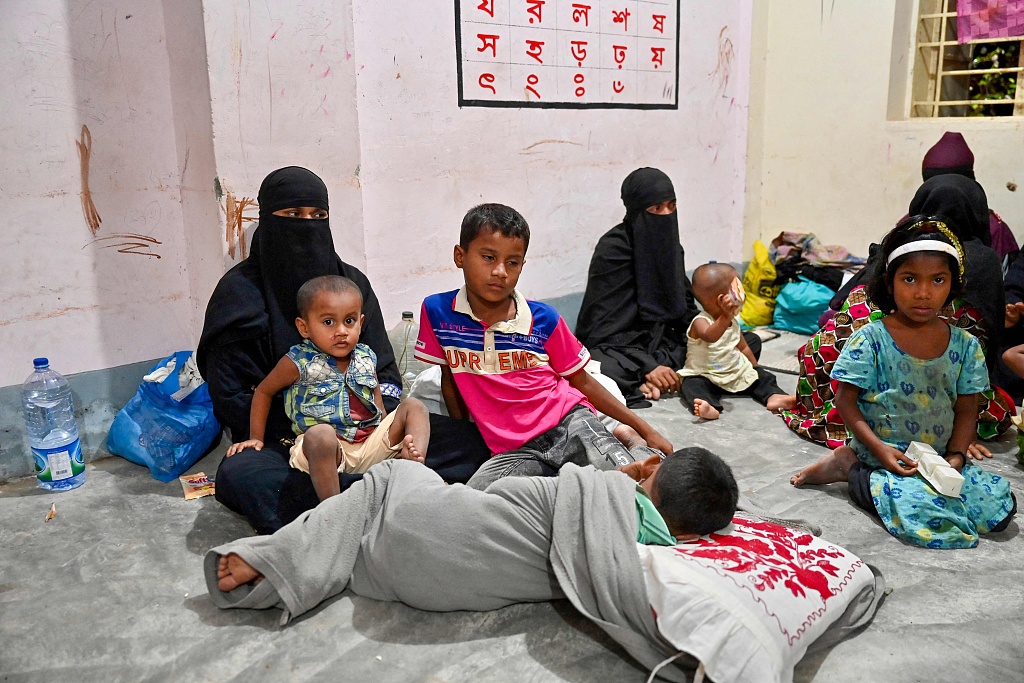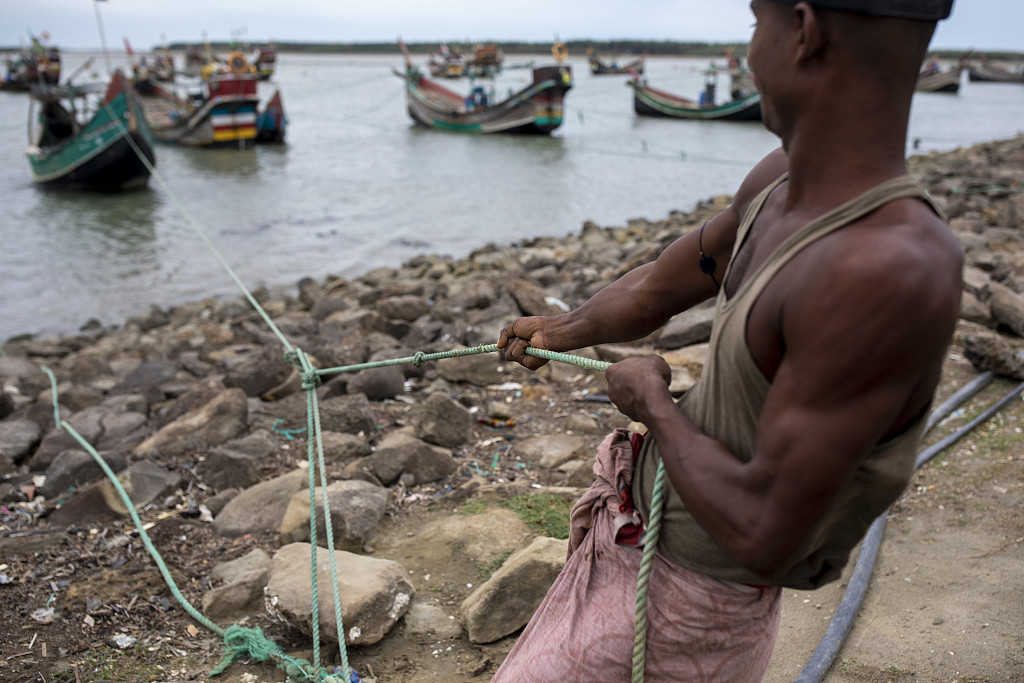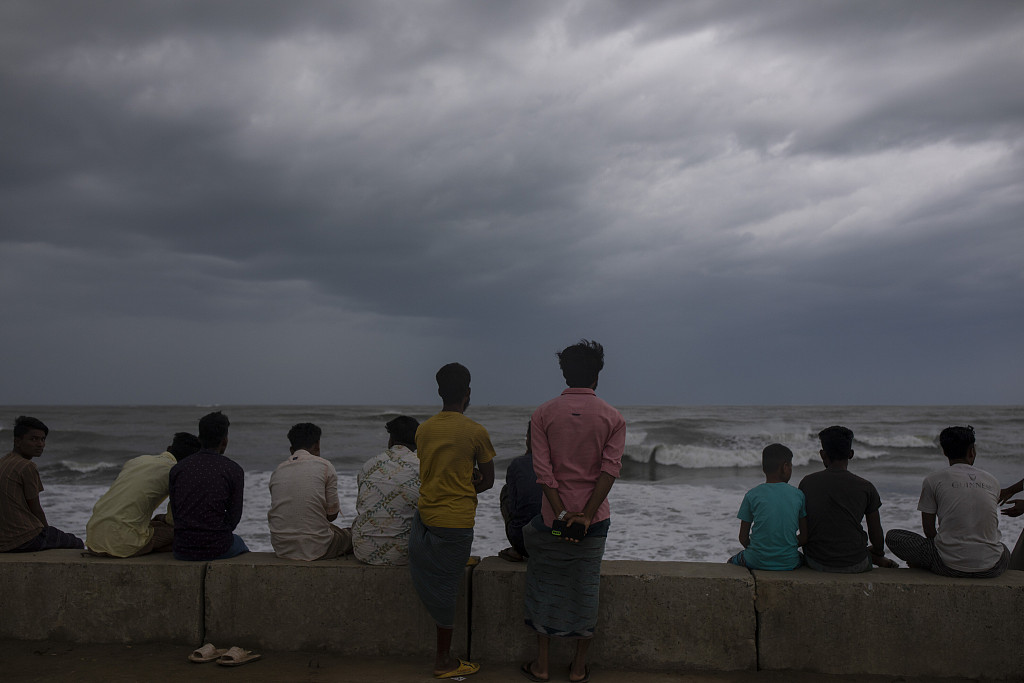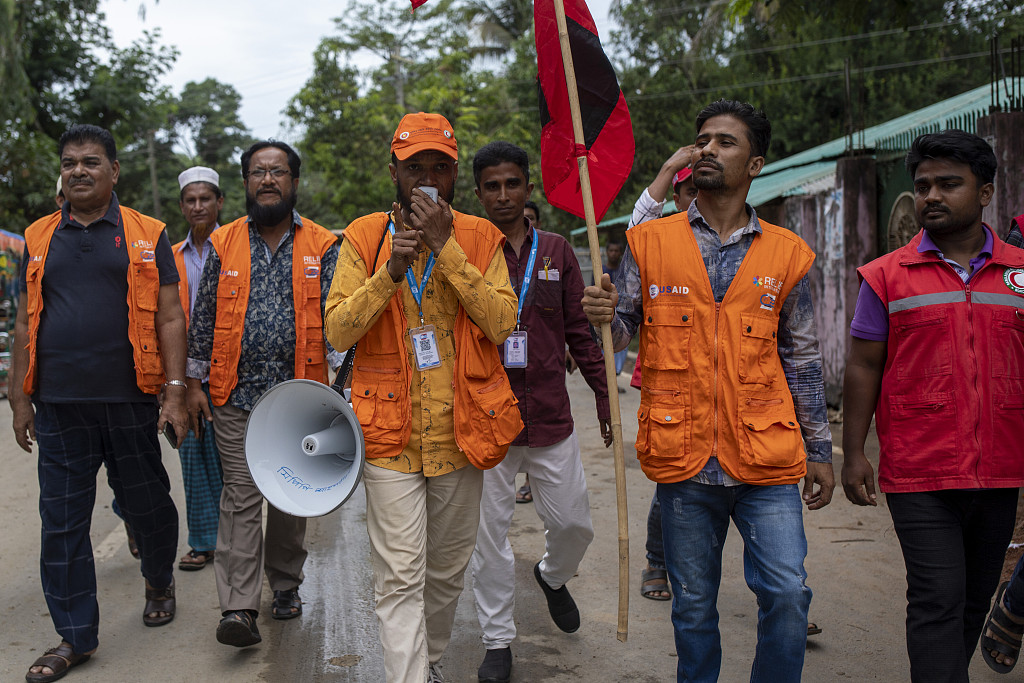A powerful storm closed in on the coasts of Bangladesh and Myanmar on Sunday, forcing the evacuation of hundreds of thousands of people to safer locations, many from frail homes in low-lying areas.
Cyclone Mocha, packing winds of up to 210 kph (130 mph), could bring sea surges of up to 12 feet (4m) affecting more than 2 million people directly in its path, most of them in Myanmar's Rakhine and Chin states.
But many more could suffer as the storm moves inland from the Bay of Bengal, the United Nations Satellite Center has warned.
"Saving lives is our main priority," said disaster relief official Mijanur Rahman in neighboring Bangladesh, which has moved about 300,000 people before the storm is expected to hit land around noon.
Aid workers are worrying about the risk to more than a million Rohingya refugees, half-a-million children among them, living in camps in the beach town of Cox's Bazar near the cyclone's path.

Women take shelter with their children in Shahpori island on the outskirts of Teknaf, Bangladesh, on May 13, 2023, ahead of Cyclone Mocha's landfall. Tens of thousands of residents were evacuated on May 13 in Bangladesh and neighboring Myanmar. /VCG
Women take shelter with their children in Shahpori island on the outskirts of Teknaf, Bangladesh, on May 13, 2023, ahead of Cyclone Mocha's landfall. Tens of thousands of residents were evacuated on May 13 in Bangladesh and neighboring Myanmar. /VCG

A fisherman with rope tries to bind his boat at Shahpori island beach in Teknaf, Bangladesh on May 13, 2023 ahead of Cyclone Mocha's landfall. /VCG
A fisherman with rope tries to bind his boat at Shahpori island beach in Teknaf, Bangladesh on May 13, 2023 ahead of Cyclone Mocha's landfall. /VCG

People gather at Shahpori island beach in Teknaf, Bangladesh, ahead of Cyclone Mocha's landfall on May 13, 2023. /VCG
People gather at Shahpori island beach in Teknaf, Bangladesh, ahead of Cyclone Mocha's landfall on May 13, 2023. /VCG

Aid workers warn residents of approaching Cyclone Mocha using a megaphone at Shahpori island beach area in Teknaf, Bangladesh on May 13, 2023, ahead of Cyclone Mocha's landfall. /VCG
Aid workers warn residents of approaching Cyclone Mocha using a megaphone at Shahpori island beach area in Teknaf, Bangladesh on May 13, 2023, ahead of Cyclone Mocha's landfall. /VCG
"People at risk are in the process of being transferred to safe shelters and we are also arranging relief packages," said Farah Kabir of ActionAid Bangladesh.
Most refugees live in makeshift dwellings in the densely packed camps after having fled a military-led crackdown in Myanmar in 2017.
At least 100,000 people in Myanmar's impoverished Rakhine state have moved to safer areas since last week, said a major ethnic militia and the U.N. humanitarian office (OCHA).
"We are using monasteries and schools as shelters," said Arakan Army spokesperson Khine Thu Kha. "We have arranged for meals in co-operation with local residents but if this becomes long-term, there will be more problems."
About 6 million people are already in need of humanitarian assistance and 1.2 million are displaced in Rakhine and the northwest, OCHA says.
Myanmar has been plunged into chaos since a military junta seized power two years ago. After a bloody crackdown on protests, a resistance movement is fighting the military on various fronts.
Cyclones are among the most devastating natural disasters in the world, especially if they affect low-lying and densely populated coastal regions in South Asia.
The Bay of Bengal, a region comprising of the coastal areas in Bangladesh, India, Myanmar, and Thailand, faces some of the world's most deadly cyclones.
Roxy Mathew Koll, a climate scientist at the Indian Institute of Tropical Meteorology in Pune city, said cyclones in the Bay of Bengal are becoming more intense more quickly, in part because of climate change.
(All images via VCG, with input from AP and Reuters)
(If you want to contribute and have specific expertise, please contact us at nature@cgtn.com.)